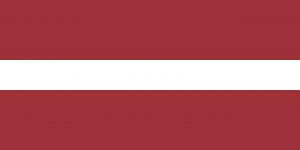Language/Standard-latvian/Culture/Latvian-cities-and-regions
As a Latvian language teacher, I'm excited to share with you the rich culture of Latvia through the lens of its fascinating geography and landmarks. In this lesson, you'll learn about the most important cities in Latvia, their history and landmarks, and interesting facts about various regions of the country. So, let's explore Latvia together!
Regions
Latvia is divided into four regions, each with a unique character and cultural heritage.
Kurzeme
Kurzeme, or Courland, is located in the western part of Latvia and borders the Baltic Sea. It's known for its numerous manors, such as the Rundale Palace, and its beautiful beaches. The region is also home to the Kuldiga waterfall, which is the widest in Europe, and the Slitere National Park, which boasts stunning forests and wildlife.
Latgale
Latgale is in the eastern part of Latvia and is the only region with a significant Orthodox Christian population. The region has many lakes, including Lake Lubans, which is the largest in the country. Latgale is also famous for its pottery, and the town of Aglona is home to the country's most important Catholic pilgrimage site.
Vidzeme
Vidzeme is located in the northern part of Latvia and has a rich history and cultural heritage. It's known for its medieval castles, such as Cesis Castle, and natural wonders like the Gauja National Park. Vidzeme is also home to the city of Valmiera, which is the cultural and educational center of the region.
Zemgale
Zemgale is located in the southern part of Latvia and is known for its agriculture and fertile soil. The region has many historical sites, such as the Bauska Castle, and the Jelgava Palace. It's also home to the Jelgava Botanical Garden, which has a rich collection of plants from all over the world.
Cities
Latvia has many cities, each with its unique character, history, and landmarks. Here are some of the most important ones:
Riga
Riga is the capital of Latvia and is located in the central part of the country. It has a rich history, dating back to the 13th century when it was founded by the German crusaders. Riga is famous for its stunning old town, which is a UNESCO World Heritage Site, and its Art Nouveau architecture. The city also has many museums, such as the Latvian National Museum of Art, and the Museum of the Occupation.
Some useful phrases in Riga:
| Standard Latvian | Pronunciation | English |
|---|---|---|
| Sveiki! | [ˈsvɛjki] | Hello! |
| Kā jums klājas? | [kaː juːms ˈklaːjas] | How are you? |
| Lūdzu! | [ˈluːdzu] | Please! |
| Paldies! | [ˈpalɟiɛs] | Thank you! |
| Atā! | [ˈataː] | Goodbye! |
Liepāja
Liepāja is located in the southwestern part of Latvia on the coast of the Baltic Sea. It's known for its long sandy beaches, which are popular among tourists and locals alike. The city also has many theaters, such as the Liepaja Theatre, and music festivals held throughout the year, such as the International Organ Music Festival.
Daugavpils
Daugavpils is located in the southeastern part of Latvia, near the border with Belarus and Russia. It's the second-largest city in Latvia and has a rich cultural heritage, with many museums, such as the Daugavpils Mark Rothko Art Centre, and historical sites, such as the Daugavpils Fortress.
Jūrmala
Jūrmala is a seaside resort town located near Riga. It's famous for its long sandy beaches, natural beauty, and Art Nouveau architecture. The town also has many spas and wellness centers, making it a popular destination for relaxation and recreation.
Jelgava
Jelgava is located in the central part of Latvia and is known for its many palaces, such as the Jelgava Palace, and beautiful parks, like the Jelgava Palace Garden. The city is also the location of the Latvia University of Life Sciences and Technologies.
Conclusion
In this lesson, we've explored some of the most important cities and regions in Latvia, each with its unique history, culture, and landmarks. Keep practicing your Latvian language skills, and you'll be able to discover Latvia's rich and fascinating culture in even more detail!

